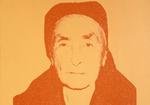Georgia O'Keeffe and Andy Warhol
dal 29/9/2007 al 29/12/2007
Segnalato da
29/9/2007
Georgia O'Keeffe and Andy Warhol
Andy Warhol Museum, Pittsburgh
Watercolors

Watercolors
During the 1970s, the American master artist, Georgia O'Keeffe (1887 – 1986) being in her 90s and nearly blind, painted a series of watercolors using the same primal forms that she had invented and been utilizing since 1916. Seven of her abstract watercolor paintings from this period will be on view at the Andy Warhol Museum from September 30 – December 30, 2007. These works were completed after O'Keeffe began working with assistance as a result of the onset of macular degeneration, which allowed her only peripheral vision after the mid-1970s. Using a large watercolor brush, O'Keeffe would ask her assistant to position her hand in relationship to the sheet of textured watercolor paper she wanted to use. Prior to this, she would feel the edges of the paper to familiarize herself with its character. Once she had a clear concept of the size and position of her brush, she made the watercolors without further aid of an assistant.
The works, simple shapes and dynamic in character, recall the abstractions O'Keeffe created early on in her career (1915-21); during the time that abstraction was her preferred language of expression. These late watercolors reveal O'Keeffe’s understanding of and commitment to abstract forms, which were so fundamental to her that she could create them almost as if her eyes were closed. “These rarely seen watercolor paintings are haunting recollections of the artist’s earlier masterworks. Like the late work of Henri Matisse, Pablo Picasso, and even Titan, they are completely unfettered by the tentative markings of a younger artist,” said Warhol Museum Director, Tom Sokolowski.
“This small exhibition is just a foretaste of a large exhibition comparing the working processes of O’Keeffe and Warhol which will be co-organized by The Andy Warhol Museum and The Georgia O’Keeffe Museum in Santa Fe, New Mexico. This exhibition, planned for 2009, will pay special heed to the use of archival materials by each artist.”
O’Keeffe grew up in Wisconsin and went on to attend the Art Institute of Chicago and the Students League in New York in the early 1900s. However it was not until several years later, while taking a summer art course at the University of Virginia, that she began to experiment with the abstract style for which she is celebrated.
O’Keeffe’s career was launched in 1916 when Alfred Stieglitz, an internationally known photographer and art impresario, exhibited her work at his famous avant-garde gallery, 291. Stieglitz and O’Keeffe eventually fell in love and married in 1924. They lived in New York until his death in 1946. O’Keeffe later moved to her Ghost Ranch house in New Mexico, where she continued to live and work until her death in 1986.
Today, O’Keeffe is recognized as one of America’s most important and successful artists. She is well known for her large-scale paintings of flowers and her love of New Mexico, whose stunning vistas and stark landscape configurations had inspired her work since 1929. The O’Keeffe works are on loan from the Georgia O’Keeffe Museum in Santa Fe, New Mexico.
Image: Andy Warhol, Georgia O'Keeffe, ca.1980
Andy Warhol Museum
117 Sandusky Street 412 - Pittsburgh



